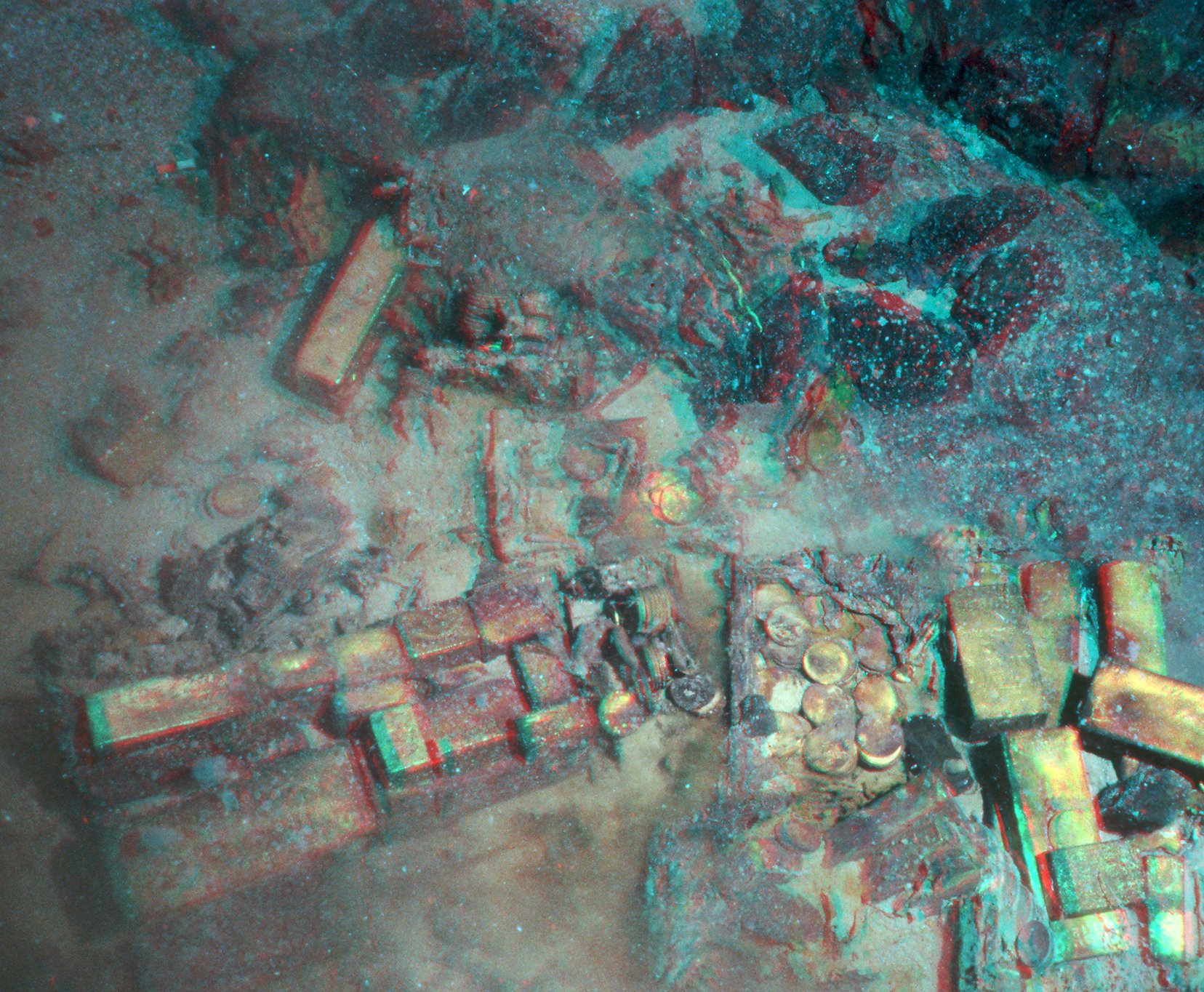Underwater Treasure
Underwater Treasure
Use 3D Glasses to view the below underwater images and see the S.S. Central America shipwreck treasure as it was discovered on the ocean floor
An initial set of survey photographs revealed the tell-tale glint from a pile of gold coins in this area.
On closer approach, we could see numerous stacks of rectangular gold ingots and round gold coins littering the seabed.
The corals and sponges growing right on the treasure looked like plants in a garden, so we dubbed the scene,“The Garden of Gold.”
This view of the Garden of Gold was taken from a slightly different angle before sediment removal. A large box of ingots sits in the foreground at lower left.
A thin, shiny Blake& Co. ingot sits teetering above the void at right center, just to the left of a solidified mass of gold dust, once contained in a gold bag or poke.
A stack of gold ingots and coins, shrouded by a gossamer layer of fine sediment, is revealed after 131 years beneath the sea.
The arrangement of these ingots retains the overall shape of the original wooden treasure box, long since decayed.
Edges of coins at the right end of the stack are visible as thin discs.
A plume of fine sediment momentarily obscuresthe stack of gold treasure as the thruster works to clear the scene.
Eventually the wash of the thruster would reveal a submarine landscape that exceeded expectations in jaw-dropping detail
After a light dusting with the thrusters, most of the sediment was blown away, exposing the contents of a multitude of treasure boxes full of gold coins and ingots .
Two of the boxes contained U.S. $20 gold coins. Some of the ingots show the maker’s marks and other identification.
In this view, you can find a clearly identifiable Blake ingot and two Harris, Marchand gold ingots.
Once the sediment was removed, more detail begins to blossom.
A $50 octagonal coin peeks out from the gold dust mass at the left which entrains a number of small Blake gold ingots.
A shipworm-riddled timber stands like a silent sentinel over bars piled on bars stacked on still more bars.
This seemingly chaotic jumble of gold gives lingering evidence of the variety of vessels or containers that once enclosed these shipments
.A pile of coins lays at the lower left, once held in a canvas or leather bag which has dissolved away.
Neatly stacked rows of gold coins at the lower center balance in place as though they were still packed in their original wooden box, long since eaten away by marine life and the elements.
But beneath this glittering surface layer of riches, protected to some degree from the harsh, unforgiving environment, we find pieces of, and some cases, whole treasure boxes with readable labels and red wax seals still in place
With its padded, flexible grasp, the remotely operated vehicle, Nemo, harvests a weighty gold ingot with great dexterity and ease.
Nemo was also capable of nimbly picking up delicate objects such as individual gold coins, jewelry, and glassware with equal ease and care.













